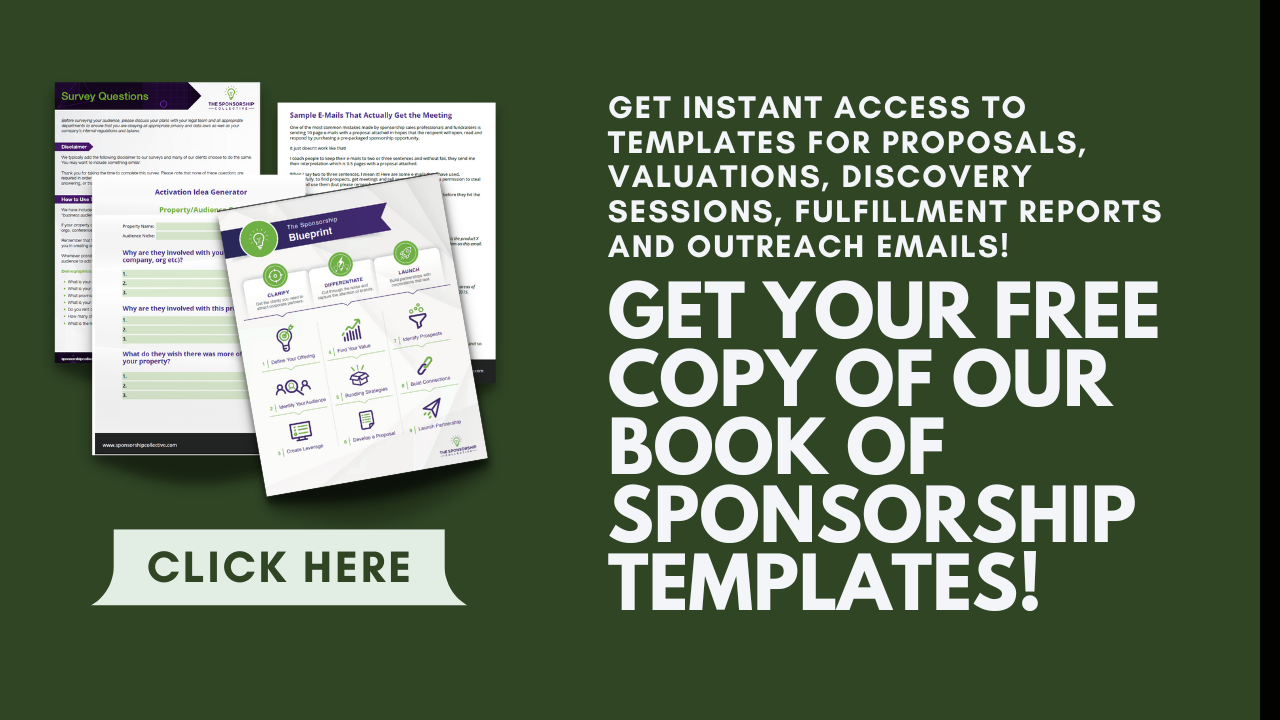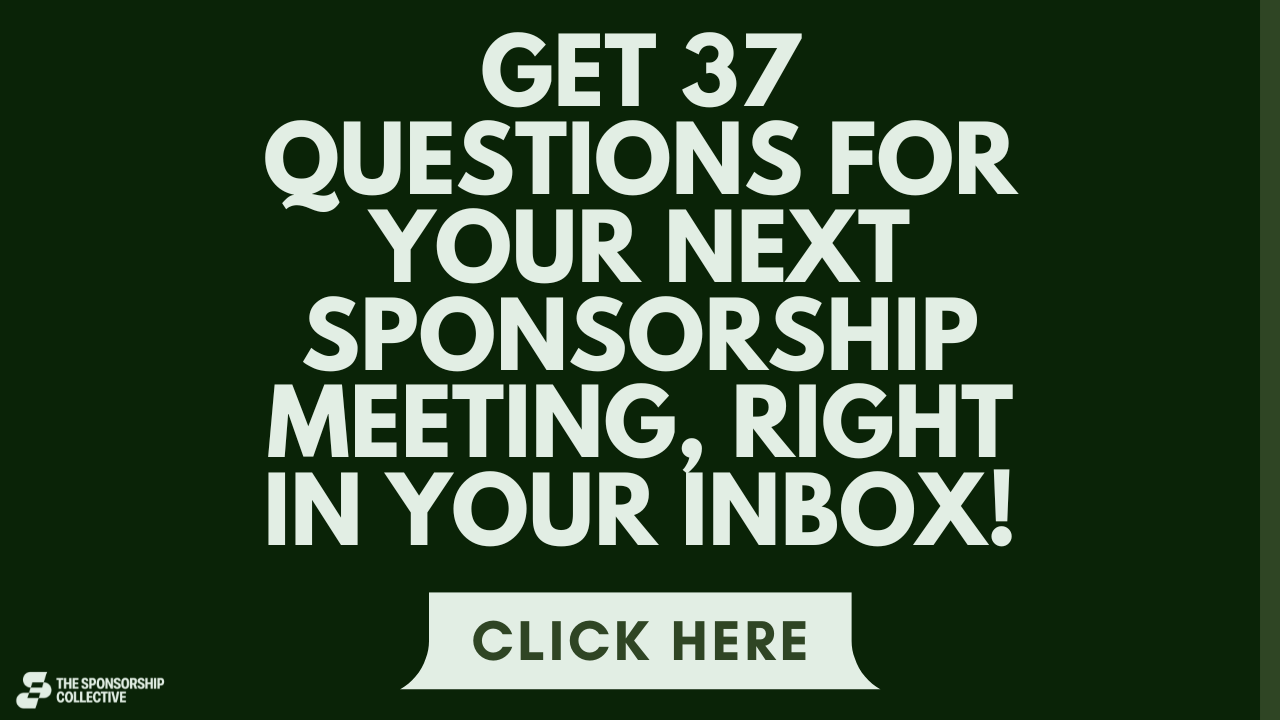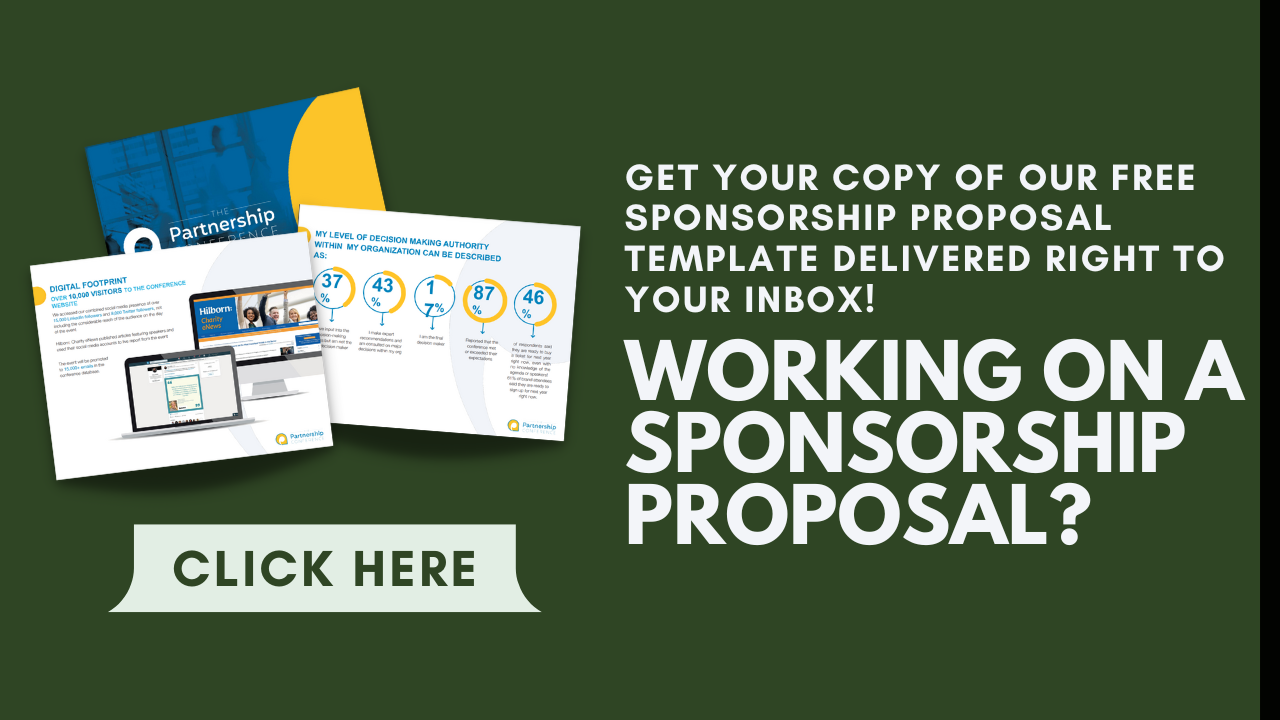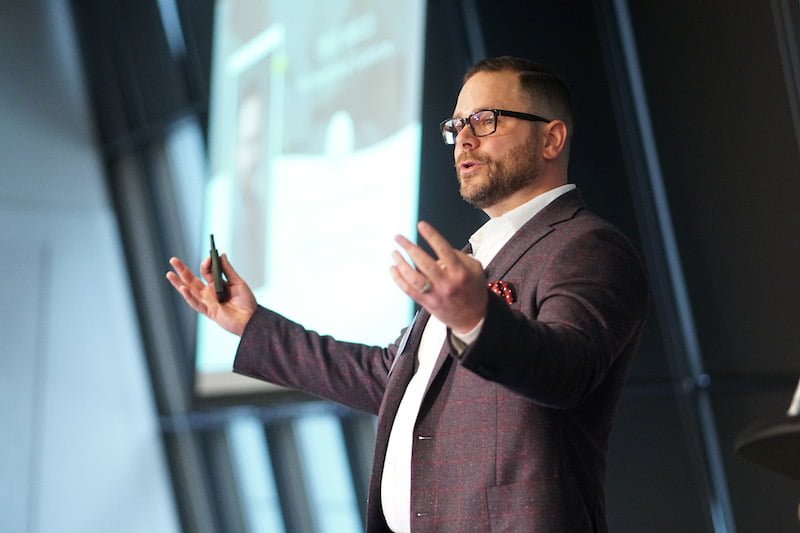Besides “gold, silver, bronze package,” perhaps no other words in sponsorship are a red flag more than “my opportunity is different.”
If you’ve been around the block enough times in sponsorship like I have, then you’ve heard somebody say this. Maybe you were even the one to utter those words. It’s okay, it happens, and you can’t change the past.
What you can do is reframe your thinking so you can stop hindering the progress of your sponsorship program. That’s exactly what I want to help you do in today’s post, so let’s get started!
The Problem with “Different”
Everyone wants to be unique in this world. It’s how we feel special, individualized from a massive crowd.
Maybe you have a bright hair color, you dress in an unconventional style, or you enjoy the kinds of hobbies that most people don’t.
You could even hold a job that’s out of the norm, such as a billboard installer, an elevator mechanic, a soap boiler, or a costume attendant (yes, these are all real jobs!).
Being unique is a good thing, for the most part. It’s how we put our stamp on the world and establish our personality. I would even say that being unique in your sponsorship program is a good thing.
After all, if you follow the same cookie-cutter routine that’s been done millions of times before, you’re not doing anything to separate yourself from the competition.
The problem arises when you insist that your sponsorship program is different. It’s so different that comparing it to anything that’s been done before is not an accurate classification.
And hey, maybe you’re in a spot where your sponsorship opportunity is truly so special that it’s never been done before. I mean, someone always has to break the mold somewhere, so why not you?
Or maybe you’re going about sponsorship wrong, and you just don’t realize it.
When I ask a lot of my clients what “different” means in the context of “my sponsorship opportunity is different,” what do you think they say?
Nothing. They usually don’t know how to respond.
It’s not a difficult question I’m asking. I’m simply trying to learn how a client’s sponsorship opportunity may be unique, because like I said before, you never know if someone is genuinely approaching new horizons in sponsorship.
So why is thinking that your sponsorship program is different so problematic? In my experience, many sponsorship seekers use being different as a crutch.
They’ll tell me that their sponsorship opportunities haven’t worked out in the past because they’re just too different. Their sales are low for that same reason.
Saying you’re different isn’t a good thing in this example. It’s an excuse you’re making for not smashing your sponsorship objectives.

What “Different” Usually Means + How to Escape the Mindset
Here at the Sponsorship Collective, it’s my job to decipher what sponsorship seekers mean when they say their sponsorship opportunities are different. It usually boils down to one or more of the same types of issues.
Interestingly enough, these problems are the same ones that a lot of sponsorship seekers face! Let me show you what I mean.

I Don’t Know My Audience
Without audience data, your sponsorship opportunity is dead in the water.
Knowing your audience means you know your organization or company exceptionally well. You’ve taken the time to get to know the people who keep revenue flowing and allow you to pay for the lights in the office (if you have an office).
Your audience informs your sponsorship opportunities as well. If you’ve learned through audience data that your customers are really big into tech right now, then you might seek a sponsor that produces smartphones or laptops.
Maybe your audience is against plastic straws or plastic grocery bags. If one of the sponsorship prospects you were considering is involved in plastics manufacturing, your audience data tells you not to go with them.
Your sponsor cares more about your audience data than anything else you can present to them. You’re serving to them on a silver platter your segmented groups, which the sponsor can then cherry-pick as prospective customers to convert.
How do you even start accumulating audience data? You need to issue an audience survey.
In this post, I go through all the areas you want to focus on in the survey, from demographics to geographics, interests and opinions, motivations, and more.
Here are a few of my top audience survey best practices:
- Your audience data should be from within the last six months.
- You have to give your audience time to complete the survey (at least a month), with reminders throughout the surveying period so anyone who missed your initial announcement can take the survey.
- Very importantly, you must motivate your audience to set aside time from their overly busy lives to complete the survey, and that requires incentivizing them. Perhaps they get an exclusive coupon code or an entry into a contest with a fabulous prize. You decide!
Once you have your audience data, I can’t stress enough how important it is to break down that data until you can’t go any further.
For example, a city or town has boroughs, so divide your customers by borough.
Separate your audience groups by specific ages (31 years old, 32 years, 33 years old, etc. rather than the early 30s), job titles, earnings, interests, pain points; really anything and everything you can think of.
This is the kind of high-value audience data that will get sponsors interested, and it has nothing to do with how “different” your sponsorship opportunity is!
I Can’t Come up with Activations
I don’t blame you here. Activations are difficult! It’s hard to think of something that hasn’t been done.
Well, I’m here with some nuggets of truth for you.
For starters, you don’t have to come up with activation opportunities that haven’t been done ever before. You really don’t.
You can take an existing idea and improve it or make it different (yes, this time I really do mean different, and in a good way) and that’s enough.
You also don’t have to spend a fortune on activations. Your activations should provide a twofold purpose: a.) serve a need or interest of your audience, and b.) fulfill a need of your sponsor. That’s it!
You can sometimes get away with cheap activations and even free ones. If they’re fulfilling points A and B, then it doesn’t matter how much money you spent (or didn’t spend).
If you ask your sponsor for some pointers on activations, I guarantee they’d be willing to help you (provided you two are working your way towards a deal or already have penned one).

I Don’t Know What My Opportunity Is Worth
Some sponsorship seekers who say their opportunity is different use that a codeword for indicating they have no idea how much the opportunity is worth.
You must use market research to value your assets one by one. Then you’ll have to sit down with your sponsor to confirm those values and adjust them as necessary.
If a sponsor tells you an asset is more high-value, then boost that baby. Likewise, when a sponsor says one of your more expensive assets maybe isn’t worth quite as much as you’re purporting, then it’s time to reevalue.
Your audience can also drive up your value. The more audience segments you have that your sponsor wants, the higher the value of your assets.
I’m not saying that determining the worth of your opportunity is a walk in the park, but it’s crucial if you want to get out of this hole you’ve dug yourself into.
I Don’t Know How to Write a Sponsorship Proposal
In some instances, a sponsorship seeker has all the above information but no idea where to put it or how to present it.
This is one of the easiest issues to overcome, as I’ve already produced for you a handy, dandy sponsorship proposal template. I also have many resources on the blog that go into a lot more detail about what should be in your proposal one page at a time.
Knowing how to write the sponsorship battle is only half the battle. You then have to practice patience by sitting on the proposal for weeks and many meetings.
You’ll know when it’s time to hand over your sponsrosrhip proposal because your prospect will ask to see it.

Conclusion
You’re not different, and in sponsorship, that’s good! It means that you’re not using your inexperience or lack of knowledge as an excuse. You’re not going up to potential sponsors and asking for money in exchange for…well, nothing, because you know good and well that you can’t do anything for a sponsor’s ROI.
Identifying your weak spots in sponsorship is critical if you hope to someday strengthen them.
Think of your sponsorship program as a suit of armor. If you walk around in a suit of armor with gaping holes and refuse to acknowledge them (gaping holes in a suit of armor are different), then you’re going to fail in battle.
When you fix your suit of armor and erase the weak points, now when you go into battle, you win!
- About the Author
- Latest Posts
Chris Baylis is the Founder and Editor-in-Chief of The Sponsorship Collective.
After spending several years in the field as a sponsorship professional and consultant, Chris now spends his time working with clients to help them understand their audiences, build activations that sponsors want, apply market values to their assets and build strategies that drive sales.
Read More about Chris Baylis

